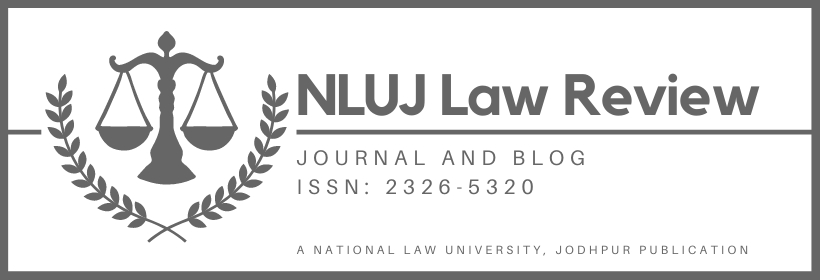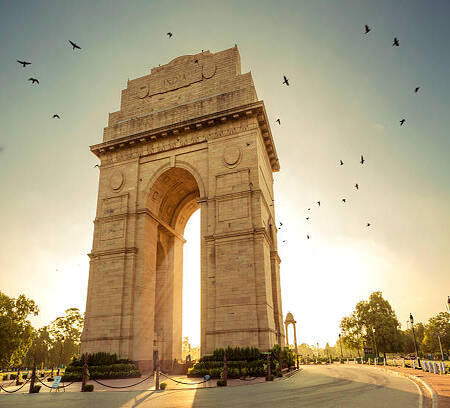In a century where the Indian sovereign has witnessed strides in transparency and accountability of other constitutional functionaries, the higher judiciary in India has seems to have moved in retrograde via the collegium and its operations. The development of the collegium system across the Second and Three Judges Cases has driven the process of judicial appointment into a closed-door vacuum that is disconnected from the constitutional system of checks and balances enforced on Indian institutions. Various controversies have plagued the decisions by the collegium regarding the appointment and transfer of judges in the higher judiciary. Claims have been made of transfers being pushed through for punitive reasons under the guise of “the administration of justice.” Multiple transfers of chief justices/senior judges of important High Courts to smaller courts in controversial manners have raised concerns on the actions of the collegium. Previously, substantiated charges of corruption have been levelled against a collegium-recommended judge. At such a time, it is essential to look at the most alarming consequence of the opaqueness and non-accountability of the higher judiciary in India – the astonishing lack of representation of minority communities in High Courts and Supreme Court, and the pitiful state of representation of the Dalit community, in particular.
The Constitution of India, 1950 is a transformative document, envisioning its functionaries to be representative bodies pursuing the goals of collective equality and social welfare.[i] In the pursuance of these goals, these bodies must be legitimately representative of the diverse Indian populace. As the singular guardians of the Constitution, the higher judiciary can be no different. Yet we find ourselves in a scenario where the higher judiciary is a homogenous composition of Savarna men, functioning as an “old boys’ club” often criticised for lack of the inclusivity necessary to have an institutional understanding of the lived experience of minorities. While the lower judiciary has increasingly become more diverse due to the enacted reservation policies, the higher judiciary continues to lack representation of those less socially privileged. This trend lends itself to the observation by various entities and luminaries over the years that there exists a pressing need to enact legislation providing for caste-based reservations in the higher judiciary. Affirmative action firstly leads to a judiciary that is adequately representative of our population. Furthermore, it enables the inducted judges to catalyse a socio-cultural shift from within the institution. This presents a path to changing the nature of the institution itself.
We must note that on multiple occasions, the Supreme Court’s appointments of judges from the less privileged castes have had some broader political context nudging the Apex Court into an inclusive direction. Three out of the five Dalit judges ever to sit on the Supreme Court were appointed during the tenures of former Union Ministers P. Shiv Shankar and B. Shankaranand, who were members of the Other Backward Class (“OBC”) and Scheduled Castes (“SC”) communities respectively. Both of them took initiative to achieve inclusion of the less privileged castes in the higher judiciary – writing letters to Chief Justices of High Courts and sometimes even holding up appointments on the basis of lack of diversity.[ii] The fourth judge out of a total five judges at the Supreme Court from the SC community, Justice KG Balakrishnan, was appointed after India’s first Dalit President, former President KR Narayanan, actively pushed for the appointment of judges from historically disadvantaged communities.
After Justice Balakrishnan retired as the first Dalit Chief Justice of India, there was a nine-year gap where the collegium didn’t recommend a single judge from the less privileged castes. Only after President Ram Nath Kovind’s speech calling for more OBC, SC and Scheduled Tribes (“ST”) judges, Justice BR Gavai was appointed. President Kovind, coincidentally enough, happens to be the second ever Dalit President.
The context above, thus, raises two crucial considerations: did these judges lack the ‘merit’ necessary to become judges of the Supreme Court, in which case was executive persuasion the secret ingredient for them to attain this ‘merit’? Or did they possess the necessary competence and integrity all along, in which case why were they unnoticed by the collegium until external calls for inclusivity and representation? The National Commission to Review the Working of the Constitution led by former Chief Justice MN Venkatachaliah noted that there were “adequate number of persons of the SC, ST and OBC in every State who possess the required qualification having necessary integrity, character and acumen required for judges of Supreme Court and High Court for appointment as judges of the superior judiciary.” Yet at all points in history, it has taken persuasion from powerholding members of these communities to push the Supreme Court into appointing judges from these communities. This implies that the appointment of these five Dalit judges is not in any way a testament to the Supreme Court’s evolving attention to inclusion, but is instead a testament to the social and structural change that can be created by letting disenfranchised communities finally hold power. This is the most compelling case for reservations because it births the possibility that one of the candidates inducted today could be the KR Narayan that refuses to be just another gatekeeper tomorrow. Far as the age-old vacuous argument of ‘merit’ goes, this author yields to Justice DY Chandrachud in BK Pavitra (II) – “… a “meritorious” candidate is not merely one who is “talented” or “successful” but also one whose appointment fulfils the constitutional goals of uplifting members of the SCs and STs and ensuring a diverse and representative administration.”
Any concept of inclusivity in a structure that directly impacts the lives of communities is about more than just morality. The lack of representation of SC and ST voices in the judiciary has had real-life consequences for the communities. These consequences come in the form of the language used by the courts when dealing with issues regarding the rights of Dalits and Adivasi, as well as the lack of understanding that would come from the life experience of living as a member of these communities. Judgements in the past have diluted protections afforded under the SC and ST (Prevention of Atrocities) Act, 1989, and have referred to tribal culture as “primitive”. The form of insensitivity displayed by the highest court in the land in these cases is a clear display of the repercussions caused by lack of adequate representation.
Justice Prabha Sridevan, a former judge of the Madras High Court, in her piece on the need for gender diversity in the higher judiciary talks about how inclusivity in appointments leads to jurisprudence that truly understands issues such as discrimination and the nature of hate violence. She cites examples to show us how it took having a woman in the position to decide for rape and sexual violence to be finally recognised as a war crime amounting to genocide, and how a female judge of the Canadian Supreme Court enacted tax deductions for working mothers and spousal support provisions. These examples extend beyond mere anecdotes, instead being hallmarks of the value of lived experience in jurisprudence. It doesn’t only provide for a more holistic and in-depth understanding of the everyday struggle of these groups; it also imbibes a sense of compassion into the judiciary. The current lack of compassion is the definitive lacuna in India’s judiciary and its commitment to our constitutional ethos. A sense of this compassion must be injected into the Indian judiciary and at the time of writing, reservations seem to be the only syringe available.
[i] See Gautam Bhatia, The Transformative Constitution: A Radical Biography in Nine Acts.
[ii] Granville Austin, Working in a Democratic Constitution: A History of the Indian Experience; Abhinav Chandrachud, Supreme Whispers (Interview with Justice YV Chandrachud, 1998.)
This article is authored by Naibedya A. Dash, student at West Bengal National University of Juridical Sciences, Kolkata.



